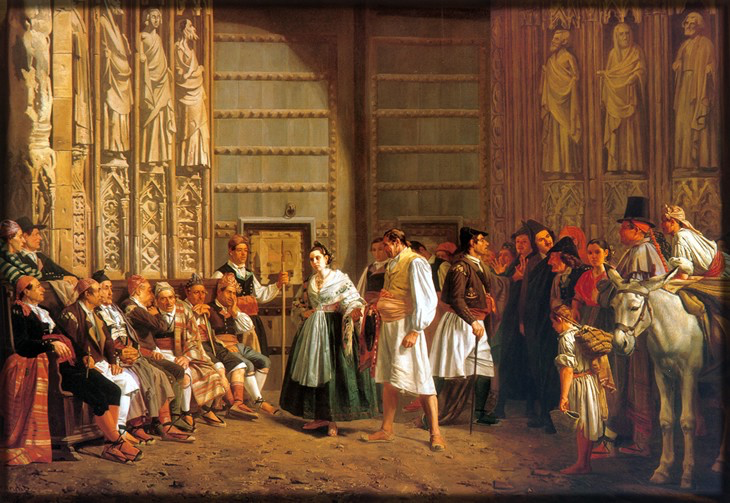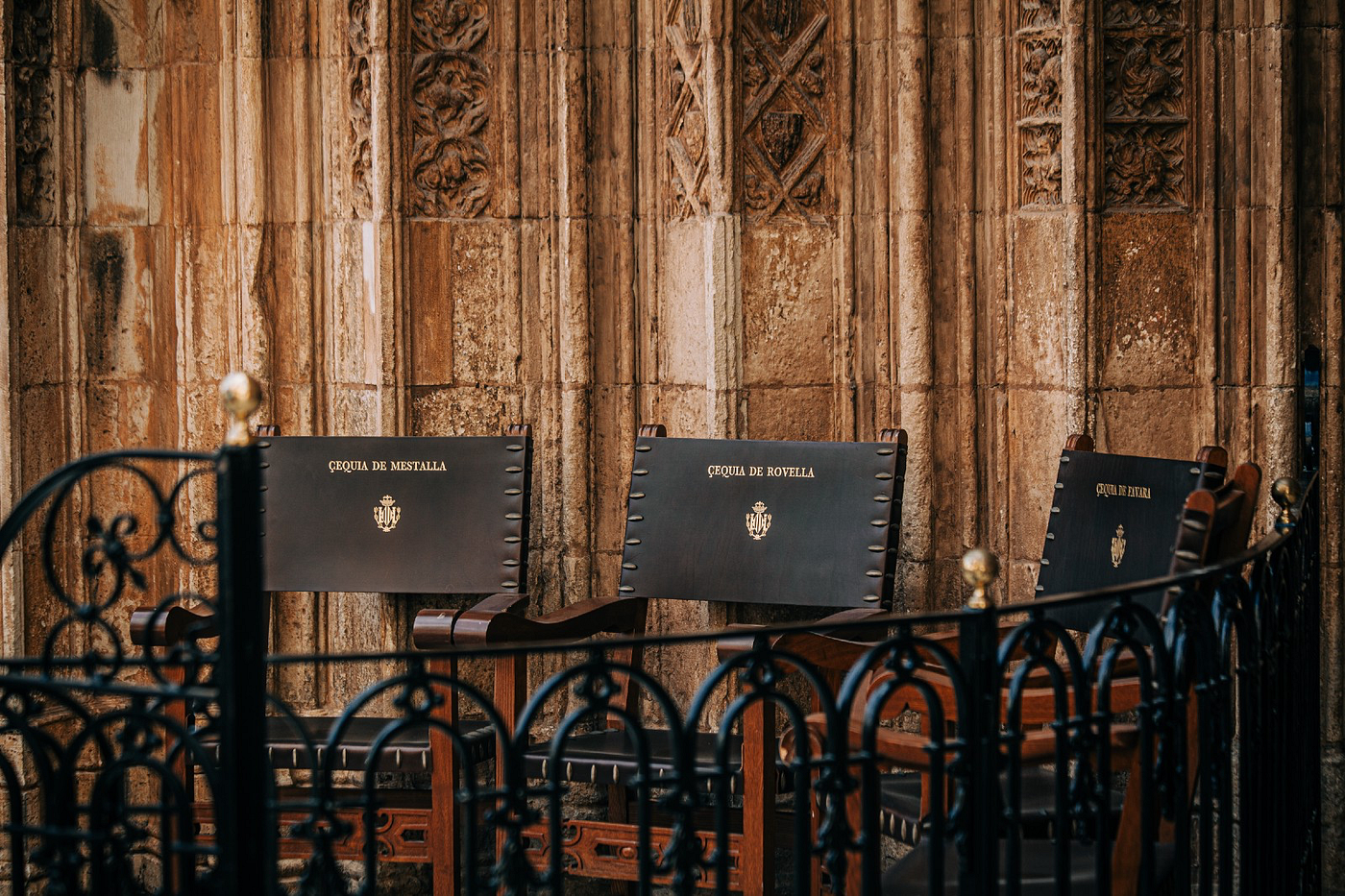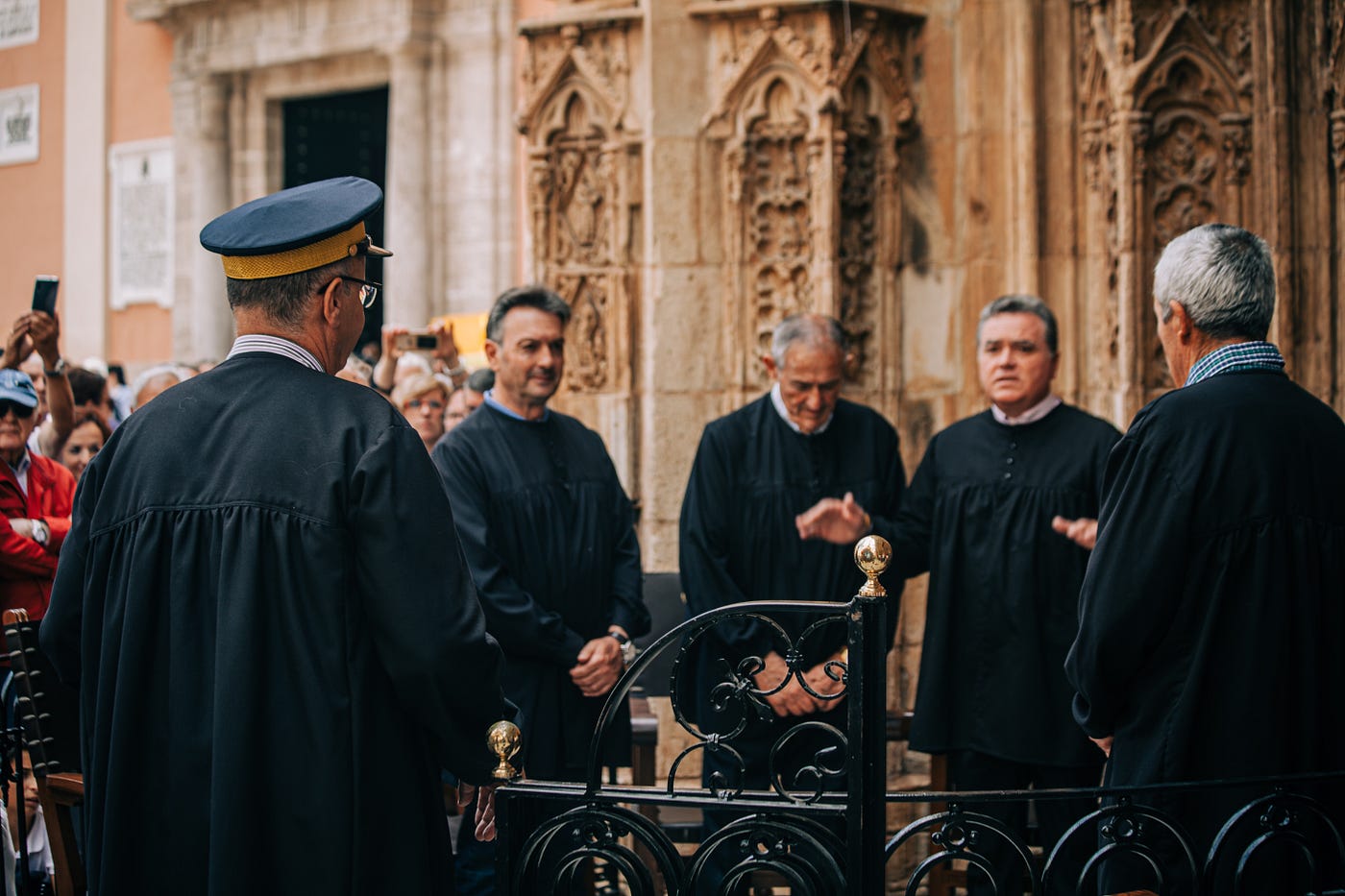Inside the Tribunal de Les Agüas: The World’s Oldest Court
Every Thursday as cathedral bells ring noon, eight men in black-robes trailed by hoards of spectators march to the Apostle’s Gate of Cathedral de Valencia. So begins the Tribunal de Les Agüas de la Vega de Valencia (or “Water Court”), a court that has met every week in the same spot for the past 1,100 years and is recognized as the oldest court on earth.

While the Water Court was most likely established when the Romans occupied Valencia, it assumed its current state when rulers of Al-Andaluz created a network of canals in this dry area, triggering disagreements over the proper distribution of water. For this reason, farmers from each of these eight canals formed a court to address residents’ complaints and assure that each region of Valencia could comfortably drink, farm, bathe and dispose of waste.


Maintaining a court solely concerning irrigation issues for over 1,000 years is a foreign concept for tourists, especially those from affluent countries where water shortages are uncommon.
Carlos Nácher, a 54-year-old water conservator and Bailiff of the Water Court, says the event is often misinterpreted by tourists. Water Court is not merely a nostalgic tradition or a performance meant to transport viewers to another time, it is an active legislative body with elected representatives recognized by the Spanish government.
“The Water Court is true, fast, effective justice,” Nácher said. “It has been maintained not because of tradition but because it works. The fact that there are only a few cases tried each year does not show it is dying, it shows that it works and has worked. That’s why it must be kept alive.”

Nácher said that there are other water courts in Spain, but Valencia’s is the most respected because of its impartiality and the prestige of its trustees. It is also highly efficient since every decision made in The Water Court is absolute, cannot be appealed, and can be easily approved by Valencia’s mayor because of its central location.
The pure justice exemplified in the discourse of Valencia’s Water Court has lead regions outside of Spain to call upon it to settle irrigation disputes and is likely the reason it was preserved in the Spanish Constitution of 1978.
Nácher has devoted a considerable portion of his life to preserving this timeless institution. Leaving his day job every Thursday morning, he carries the court’s massive, wooden chairs through a swarm of tourists to their places just outside the Apostle’s Gate of Cathedral de Valencia, positioning them in a circle and surrounding them with an iron fence as has been done for over a millennium. Nácher then throws a black robe over his clothes and transforms into the Court’s Bailiff — a job he took after serving as a trustee for the Robellas canal — and calls the court to session.
“I was asked to be Bailiff when I stepped in for the former Bailiff when he was ill,” Nácher said, “ — Carrying the chairs, setting up the iron fence, and sometimes conducting the entire court for him when he no longer could. When he stepped down, the other trustees saw my work and thought of me.”
As bailiff, Nácher leads the trustees to their designated seats at the last bell toll, a brass harpoon raised high in his right hand. He then turns to the crowd, chants in the regional Valenciano language (a dialect of Spanish native to the region of Valencia) the names of each of the eight canals represented, and hears the complaints of these regions as voiced by their respective trustees.
“Every trustee has his own reason for serving on the Water Court,” Nácher said, “But, for all, it is an honor.”


Part of the mystery of the Water Court is the large crowd this humble event regularly attracts. While the mob mostly consists of bemused tourists and curious bystanders, some Valencian natives have made Water Court a part of their weekly routine.

Jose Martínez Leon, a 69-year-old retiree living in Valencia, said he attends Water Court every single Thursday.
“I am interested in the complaints made and the way they are resolved,” Martínez Leon said. “It keeps me connected to the problems of our area and with the past.”
In 2009, Water Court was made part of UNESCO’s list of Intangible Cultural Heritage. Whether viewed at a distance or from a seat under the Apostle’s Gate, Water Court serves as a rare and indispensable link between history and the present — an increasingly rare experience in today’s world.
Written by Elli Esher

